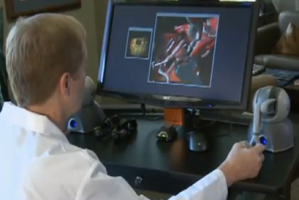When we get on a commercial flight to go across the country, we are all pretty sure that the pilots, and indeed the attendants, are well trained. And we inherently know that parts of that training have been in virtual environments. That is, not many of them have been specifically involved in a crisis or emergency, but they have trained for such a situation in a virtual environment, and we all have a certain confidence that they can cope.
 It makes sense that the same kind of simulation and practice would be applied to surgical procedures, but it has not been until recently that realistic surgical simulation has been available. But now Surgical Theater provides 3D virtual training for surgical procedures using 3D touch-based devices from Geomagic to enable actual and realistic sensations for the surgeon.
It makes sense that the same kind of simulation and practice would be applied to surgical procedures, but it has not been until recently that realistic surgical simulation has been available. But now Surgical Theater provides 3D virtual training for surgical procedures using 3D touch-based devices from Geomagic to enable actual and realistic sensations for the surgeon.
Providing what's called"force-feedback," the haptic devices work in concert with 3D data to emulate, for example, the feel of a scalpel touching bone, transmitting the sensations through the stylus on the device and through the doctor's fingertips. Because the system uses the patient's unique information (3D data created from a CT or MRI), the 3D practice model can be a perfect representation of the patient's knee, shoulder, skull or other body part. This is particularly important for surgical procedures that involve severe trauma or those in which the body part has unique damage.
You can read more in a comprehensive article on Surgical Theater from Medical Design Briefs.